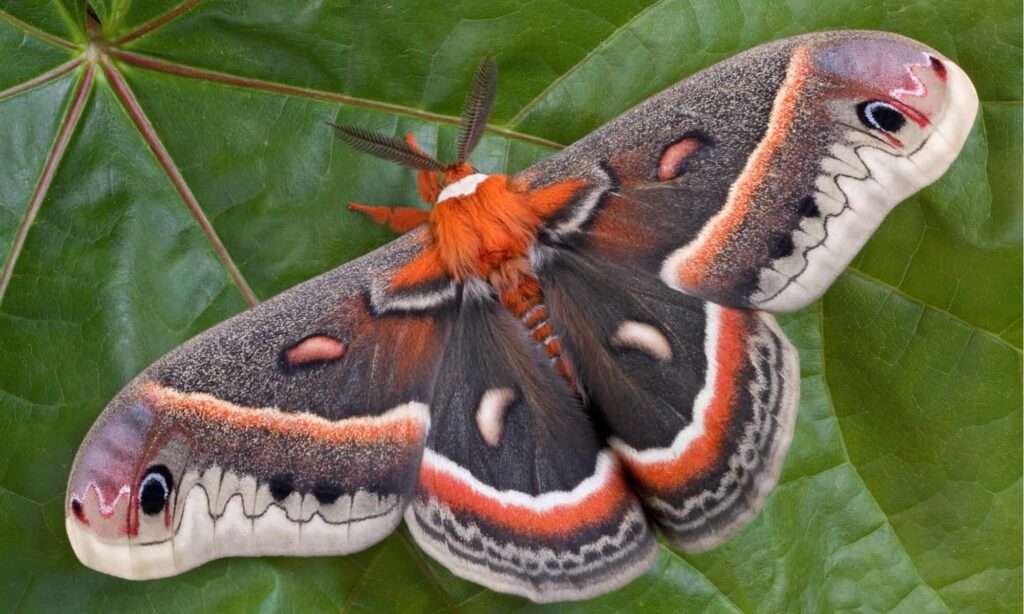
Description
Scientific Name: Eacles imperialis
The imperial moth, Eacles imperialis, belongs to the Saturniidae family and subfamily Ceratocampinae. One of the most common, significant and beautiful silkworm moths is the imperial moth.
Because of its stunning appearance and distinctive pink, orange, or rusty pale purple markings and speckles on its golden wings, the imperial moth distinct from any other species.
The green form of a caterpillar can range from light to dark green, and the brown form can range from orange to nearly black. A pair of spiny horns on thoracic segments 2 and 3 and a pair of smaller horns on the last few abdominal segments make up the four spiny horns in the front. The side circular spiracles are white with a dark outline. Long, whitish hairs cover the back sparsely; shorter whitish hairs cover the sides.
Habitat
The imperial moth is a vegetarian. Its lifespan is typically no more than a week because all it does is reproduce. The caterpillar’s nutrition is varied, nevertheless. It has pine, oak, box elder, sweetgum, Norway spruce, basswood, and sassafras trees among others.

Diet
Its lifespan is typically no more than a week because all it does is reproduce. The caterpillar’s nutrition is varied. It has pine, box elder, oak, sweetgum, basswood, Norway spruce, and sassafras trees among others.
Life Cycle
Every year, there is only one brood. The larvae or caterpillars of imperial moths have five instars. This means that each instar is bigger than the previous one and that they molt four times before they are ready to pupate. Even the first instar differs visually from the previous one. Instead of spinning cocoons, the caterpillars burrow into the ground to pupate. Females are larger and have broader wings, as well as less brown on the wings above. On the leaves of suitable host trees, they lay their eggs in groups of one to five. A few weeks later, the caterpillars emerge and start to eat and grow. In the ground, caterpillars pupate and spend the winter in that state.
As Pet
Despite the fact that they are wild forest creatures and that can keep them as pet worms. A caterpillar can be kept until it transforms into an imperial moth and is then released back into its natural environment. These moths can’t feed themselves because they lack a mouth, therefore they will eventually perish.
Imperial caterpillar larvae consume the leaves of various plants, including bald cypress, basswood, cedar, hickory, oak, honeylocust, birch, maple, sycamore, elm, sassafras, pine, sweetgum, and pecan. The adult imperial moth doesn’t eat because they don’t have functional mouthparts.
Table





